This one is a "7" out of 10 on my beloved Foot Scale (stinky feet scale). Hopefully it lives up to memory!
Tommy Reddicks
www.cheesedesert.com
|
Our newest cheese looks good after three days. The Saint Marcellin is truly a stinker and we can't wait to try it homemade. If you read our notes page on this cheese you'll see that this cheese had the honor of getting kicked out of the family home in Wheatland, WY. Mom just couldn't take the smell.
This one is a "7" out of 10 on my beloved Foot Scale (stinky feet scale). Hopefully it lives up to memory! Tommy Reddicks www.cheesedesert.com
0 Comments
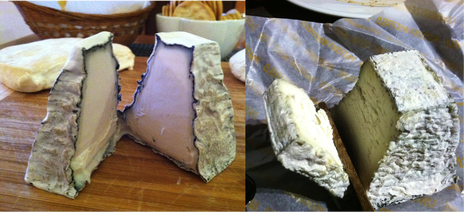 Well. We've taste-tested our latest batch of Valencay and we're pleased to say we've given our French cousin a good run for her money. Pictured above, our US version is on the left and the French version we tried in Europe this past October is on the right. Ours is a bit younger with a creamier middle, but we're very happy with our aging and affinage this time around. We paired our new superstar with some Artison Sourdough Bread, Figs, apples, and dehydrated apricots (and a healthy dose of Olive Oil w/Balsamic). It was FABULOUS!!! We controlled the humidity and airflow with more precision this time around. The patting method I used actually held back the gc/pc growth, shutting it down a little earlier. Our next batch will be done without as much patting to see if we can get a little longer mold life and some better rippling from the mold growth in the rind. As for aromatics, the extra airflow actually lessened the stinky-factor to a 5 or 6 on what I lovingly call The Foot Scale. The Reblechons we're working on (seen in the back left of the US Valencay photo) are certainly winning the stink award (about an 7 on the Foot Scale) in the house at present. But, with the start of a new batch of Saint Marcellin, we'll see if we can add a cheese to our cave that can compete with the Reb's. Tommy Reddicks www.cheesedesert.com 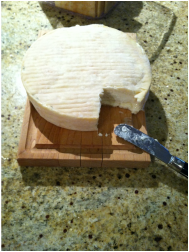 We had the pleasure of taste-testing one of our latest Reblechons today. This one finished well, but started out a bit too humid. If you've been following our previous posts on humidity, you know we've been adjusting to the more humid fall indoors (40% rh indoors in Indy this year). This led to a very tender and thin rind, which needed extra babying during washing. We saved this cheese from near-death by fixing the humidity issue early. If left to it's early humid track, the rind would have over-molded, and would have lost its ability to support the cheese. In the end all worked out okay, and the reward was today's taste test. It had a great salty-butter outer rind with a nice buttery cream paste on the inside. Admittedly, I ate about a third of this round in a sitting before wrapping for later. A taste test is indeed great suffering, but someone has to ensure quality control!! Today we start a new batch of FETA. We're also excited to start a batch of St. Marcellin. It's a cows milk cheese made in smaller molds and finished in 4 small ceramic crocks. This was a cheese that always made appearances at our cheese parties. For whatever reason, we saved our ceramic crocs from those days in Colorado. Now they enable us to put the true finishing touch on this oozy gooey stinker! Tommy Reddicks www.cheesedesert.com 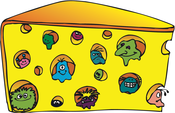 It's amazing how Mother Nature wreaks havoc with moisture! Over time water can cut a rock in two. It can change the course of landscape, and even turn New York Subway systems into tide pools. But, in the world of cheese making, moisture is a fickle beast. Too little, and your cheese dies (at least the part that's supposed to grow). Too much and you get UFO's (ugly fungal objects) and you have to start scrambling with UFO killer (salt, vinegar, airflow etc.), which can taint the outcome or maturation of the cheese. Some cheeses like less humidity (harder cheeses prefer between 40-60%) during aging, while softer cheeses want more humidity (65-95%). So, what happens when the house humidity is 40%, the cheese fridge humidity is 50%, and you have one cheese needing 65% and another needing 90%. Perhaps you put the house inside the fridge so you can combine their collective humidity to reach 90%. Or, maybe you buy two fridges in order to have each at a different level. Maybe you use a reptile humidifier pumped into a fridge to get to 90%. May you boil water 24-7 near the cheese to increase relative humidity? All ridiculous notions aside, it is frustrating that in a world where cheese appears at nearly every turn there have yet to be dedicated cheese fridges that can also set themselves to dual zone temperature "and" humidity control. Dual zone temperature can be found on upscale wine fridges. But a fridge with hygrometer controls would be a revolution for the home cheese maker. For us, we are finding that the days of air conditioning in the hot Indianapolis summers kept our house dehumidified, but the lack of AC and lesser need of heat in the fall/winter has our house at a higher humidity and is playing havoc with our cheese development. And, with tender semi-frim cheeses, each time mold has to be addressed with a salt or vinegar solution, the cheese is at risk. So, we have been adding access to ventilation and open air in the cheese making process and are seeing a correction in our aging process. Having grown up in dry Wyoming, and spent a great deal of time in Colorado, I took too much for granted in terms of seasonal variations in humidity. Note taken! Tommy Reddicks www.cheesedesert.com 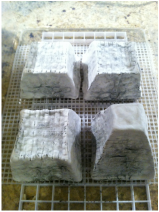 Goat's milk Valencay Say it isn't so! Our friend Anna has informed us that there is a new bit of legislation being introduced that could either stop the sale of raw milk in Indiana or open up sales statewide with better safety standards. (Click here to view the link she shared with us.) I sure hope for the latter! While there is plenty to be made from store-bought milk, access to raw milk enables the home cheese maker to really perfect the craft without having to own a farm! Speaking of farms, a shout out must go to Copper Creek Farms in Kokomo. We own a herd share through Copper Creek and they provide us with raw goat's milk weekly. From that great raw product we are able t produce our Valencay cheese (pictured here looking spectacular after 6 days in the cave). So, here's to hoping the law bends our direction and opens up further avenues for home cheese makers statewide! Tommy Reddicks www.cheesedesert.com 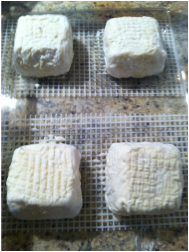 Kelly blogged yesterday about our killer Valencay cheeses in the cave this week. She was right. Nobody is likely to die, but after turning the cheeses tonight, I'm super excited. These Valencays are absolutely spot on!! Tonight's update is in honor of the ugly stepchild - the Naked Valencay. I call it naked because I had to remove its outer coat. It's one of those cheesy science experiments from the previous over-humidified Valencays. For these ugly ducklings (pictured here), I pulled the skin off as it had started to slip and break down, and I was left with little white goat cheese truffles. They are smelling good (in cheese terms) and are firming up nicely. They should be ready for tasting this weekend. Time will tell if this little accident will either create something worth replicating or worth adding to the trash. Tommy Reddicks www.cheesedesert.com 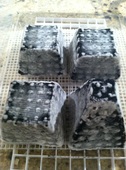 So we haven’t had this dilemma yet. But the day is fast approaching. We recently produced a Valencay without pasteurizing the goat milk prior to beginning the cheese making process. This Valencay is looking really promising. We already don’t go into details with friends about the cheese making process. We have pasteurized all our other cheeses and we haven’t told them that the cheese they are consuming sits on our kitchen countertop for several days prior to it going into a 55 degree cheese cave (a converted wine fridge) where it sits for a few more weeks. Enter level two: non-pasteurization. Louis Pasteur originally conceived pasteurization as a way of preventing wine and beer from souring. In 1891 the first pasteurizers were installed in a US milk processing plant and cheese has been around much longer, so pasteurization can’t be essential to making cheese. In this day and age of hand sanitizers, are my friends ready for our Valencay? Tonight my husband declared this Valencay as our best batch ever (and it isn’t pasteurized). So my friends, will you sample my cheese? It’s killer… Kelly Wensing, www.cheesedesert.com 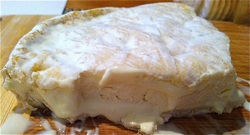 The ooze of tonight's Reblechon at temperature. Abiogenesis is the theory of how biological life could arise from inorganic matter through natural processes. This Darwinian spontaneous generation theory utilized a concept of Primordial Soup or Primordial Ooze as the basis by saying that this "ooze" or "soup" was a collection of key ingredients needing only the right catalyst to spontaneously generate living matter. Lost yet? Well, this sounds an awful lot like the beauty of the chemistry behind oozy, ripening cheese. Cheese is nothing more than a collection of ingredients and conditions that appear to just spontaneously form, grow, and break down. And amazingly enough, many of the ingredients described by early scientists as being necessary for Primordial Ooze (ammonia, phosphoric salts, lights, heat, electricity, etc) are key to the creation of ooze in cheese. That's not all. There are more primordial connections to this story. Guess who finally dispelled the theory of Abiogenesis (or spontaneous generation)? It was none other than Milk's Grandfather, Louis Pasteur himself. That's right. Pasteur conducted bacterial experiments (along the way to his pasteurization process) that proved that generation from static compounds or combinations cannot occur without reaction from an outside living force (in his case, outside bacteria). Pasteur said the following in 1864 after his biogenesis experiments with bacteria, "Never will the doctrine of spontaneous generation recover from the mortal blow struck by this simple experiment." And just like that, Darwin had begun to lose key scientific ground. His nemesis...ooze. But wait, there's more! Just when we thought Primordial Ooze was a dead theory, scientists studying the deep oceans still coin the phase "Primordial Ooze" to represent the layer of ooze at the bottom of deep oceans (2 miles or more deep). Historically connected to Abiogenesis, this "ooze" today is a combination of decomposing plant material and animal matter, silt, ingredients like ammonia, phosphorus, sulfur, and of course salt (sound familiar?). Of course there are still theorists that claim many of the great unsolved scientific mysteries surrounding origins of life have yet to be explained because the answers lie hidden underwater. It's hard to argue that point when thousands of new species are discovered every year in the deep oceans, and- WAIT!! What's this got to do with cheese you say? It's simple. Ooze is gross, cool, yucky, sticky, fun, ever so mysterious, and for whatever reason scientifically significant. It can gross us out or excite us, and scientists in multiple disciplines have tried to argue that all life itself came from ooze. Some scientists say deep-ocean ooze represents origins of our species, and other simply credit it as the lifeblood of a healthy ocean (settling and upwelling). And then there is Louis. Louis Pasteur studied ooze with great intention, and today's cheese would not be the same without his "ooze-work". And last but not least, cheese fans will tell you that the gooey ooze of a perfectly ripe cheese can be a wonderful reason for living. Now, time to go finish that Reblechon... Tommy Reddicks www.cheesedesert.com 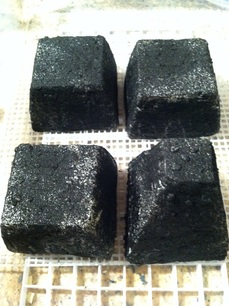 The Valencay cheese is a peculiar goat's milk cheese. Not only does it need to sit out at room temperature for up to 72 hours, it then gets coated with ash (see our latest young Valencay cheeses from this evening's ashing). Most of us think of milk products turning into monstrous moldy nightmares after being left at room temp for 3 days. But, milk is a curious thing. I'm always left wondering who invented cheeses like these. But when you think about what folks had back in the old days (middle ages) it actually makes sense. In a time of no refrigeration, milk was left to turn into all sorts of interesting things (good or bad). Eventually, hunger and economy took over and what didn't kill you became tomorrow's dinner. So, let's give a shout out to the folks who tried the old gross sticky, moldy, milk! Way to go old guys and gals! Those of you who navigated day-to-day milk roulette and intestinal trauma paved the way for cheese freaks worldwide to make really smelly stuff that not only tastes good, but won't kill you! Things are truly special when our cheese cave is opened for each day's washing and turning. The smell takes over the kitchen and wafts upstairs to the 2nd level.In my most sweaty teenage days, my feet never had such a stout impact on the home. That's special stuff! But, the question remains, "What is a good cheese smell (gloriously stinky) verses a bad (harmful) cheese smell?"
The answer is fairly simple. If it smells sulfuric, or ammoniated, it's gone over to the dark side. If it smells like bad socks, it's probably good. There is an aromatic "old moldy house" quality to stinky cheese that is an acquired taste (for the nose that is). Happy scenting! Tommy Reddicks & Kelly Wensing www.cheesedesert.com |
AuthorsKelly Wensing and Tommy Reddicks. Archives
June 2014
Categories |